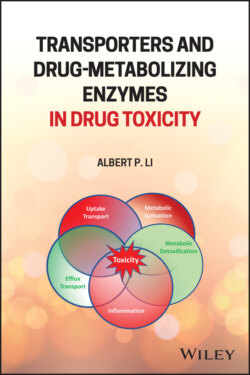Читать книгу Transporters and Drug-Metabolizing Enzymes in Drug Toxicity - Albert P. Li - Страница 67
3.6.1 Drug Metabolism and Toxicity
Оглавлениеin vitro studies suggest that the hepatotoxicity of nefazodone is associated with metabolic activation of the parent drug to highly reactive and toxic metabolites. Human liver microsome studies show that nefazodone undergoes hydroxylation and sulfydryl conjugation occurred on the 3‐chlorophenylpiperazine‐ring. This leads to the initial formation of p‐hydroxynefazodone which is transformed to the reactive quinone–imine intermediate. The reactive intermediate is believed to be responsible for felbamate hepatotoxicity as well as for time‐dependence of CYP3A4, the P450 isoform responsible for nefazodone metabolism [119]. Nefazodone and its metabolites are found to cause mitochondrial damage, leading to reactive oxygen species (ROS) formation as demonstrated by reduced GSH depletion [120]. An in vitro human hepatocyte assay for the identification of drugs associated with liver failures using ROS/cellular adenosine triphosphate (ATP) ratio as an endpoint routinely used nefazodone as a positive control representing DILI drugs [121].
